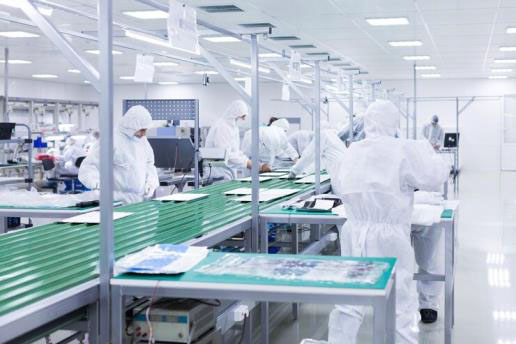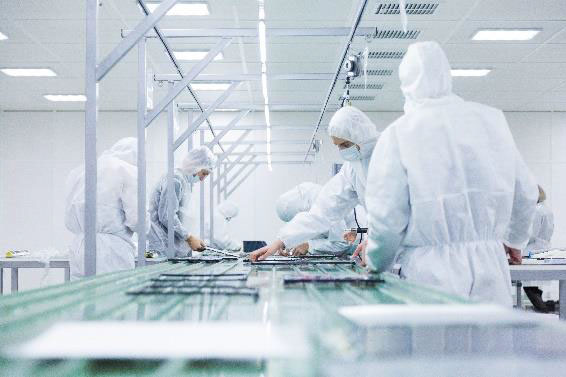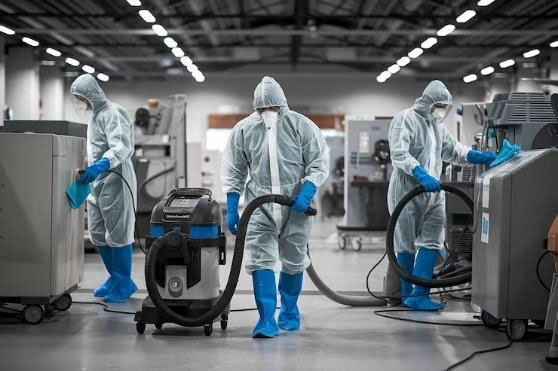When you walk into a hospital room and see an IV cannula inserted into a patient’s arm, it looks simple. Just a tiny plastic device doing its job. But behind that device lies a tightly controlled world of engineering, microbiology, and process discipline.
Welcome to the world of cleanroom manufacturing, the invisible fortress where every IV cannula is born sterile, precise, and reliable.Let’s pull back the curtain on what happens behind the scenes in a cleanroom, and why it’s a non-negotiable for quality-focused medical device manufacturers.
A cleanroom is a specially designed, controlled environment where pollutants like dust, airborne microbes, aerosol particles, and chemical vapours are kept to an absolute minimum.
Cleanrooms are classified based on the number of particles per cubic meter of air. For medical devices like IV cannulas, ISO Class 8 (Class 100,000) is typically used for assembly and packaging.
Think of it as a surgical theatre but for devices.

Why IV Cannulas Must Be Manufactured in Cleanrooms?
IV cannulas are inserted directly into the bloodstream. This makes them a Class 1a or 2b medical device, depending on the region, and therefore, high-risk in terms of infection. Manufacturing them in uncontrolled environments is not only unsafe, but it’s non-compliant.

Risks of Poor Manufacturing Environments:
- Microbial contamination of the catheter or needle
- Foreign particle inclusion inside the hub or flashback chamber
- Biofilm formation on improperly handled components
- Failed sterility even after EO processing
This can lead to:
- Phlebitis
- Sepsis
- Catheter-related bloodstream infections (CRBSIs)
What Happens Inside a Cleanroom?
Let’s take a walk through the cleanroom used for IV cannula production at Cubit MediSurge or any compliant manufacturer.
1. Air Filtration and Pressure Control
- HEPA filters clean the air of 99.97% of particles above 0.3 microns.
- Positive pressure prevents outside air from entering.
- Laminar airflow zones are maintained over critical areas like sealing or assembly stations.

2. Gowning Protocols
Before anyone enters:
- They go through an air shower
- Wear head-to-toe sterile gowns, masks, gloves, shoe covers, and sometimes goggles
- Follow a strict entry sequence like a donning ritual to ensure no external contaminants enter
Even talking or sneezing inside the cleanroom is tightly regulated.
3. Controlled Materials and Movement
- Raw materials (like FEP catheters, polypropylene hubs, needles) are cleaned and sterilized before entry
- Movements of trolleys, trays, and bins are kept linear — never criss-crossed or chaotic
- Workflows are designed to move from “clean” to “cleaner” zones
This eliminates the risk of re-contamination.
4. Automated and Semi-Automated Assembly
- Cannulas are assembled using precision tools under constant inspection
- Needle insertion into the hub, catheter loading, and flashback chamber assembly are all validated
- Adhesives used are biocompatible and UV-cured under controlled lighting
5. Visual and Functional Testing
Every piece goes through:
- Leak tests to confirm flow
- Flashback visibility checks
- Needle alignment inspections
- Random microscopic particle analysis on surface areas
In many setups, a Quality Control Inspector signs off on every lot before it’s passed to packaging.
6. Sterile Packaging in Clean Zones
- Blister packing is done immediately after assembly
- Sealing machines are calibrated and validated daily
- Packs are labelled with batch codes, expiry, and barcodes
From here, devices move to EO sterilization, followed by aeration and final QC.
The Cleanroom Is Your First Layer of Sterility
A sterile product doesn’t begin at EO sterilization. It begins with:
- Dust-free plastic pellets
- Human discipline
- Layered airlocks and filtration
- Daily microbiological monitoring of surfaces and staff
At Cubit MediSurge, we conduct routine environmental monitoring:
- Surface swabs
- Air microbial plate testing
- Temperature and humidity logging
- Gown validation and gloveless touch testing

Cleanroom = Confidence
A properly maintained cleanroom ensures:
- Fewer EO residues (as bioburden is lower to begin with)
- Consistent product quality, batch after batch
- Zero recalls or rejections due to contamination
- Global regulatory compliance (ISO 13485, CE, CDSCO, etc.)
If you’re sourcing IV cannulas or considering a supplier, ask about their cleanroom and not just the product.
A cleanroom is not just a room. It’s a system of discipline, documentation, and design that protects patients before a nurse ever opens the pack.
Want a virtual tour of our cleanroom or a copy of our microbiological test reports?
Get in touch and we’re always happy to show you what goes on behind the scenes, because transparency is a part of sterility too.
